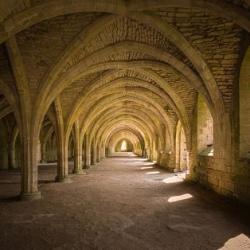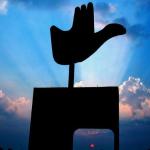1 Corinthians 10:14-22 forms a paragraph of its own. Prior to this section of 1 Corinthians 10, Paul is drawing out an extended comparison between Israel’s exodus and wilderness wanderings and the state of the Corinthian church. After verse 23, he draws the conclusion that eating and drinking should be governed by love for the brothers.
Between these two, the paragraph in verses 14-22 forms a rough chiasm:
A. Flee idolatry, v 14
B. Argument from Eucharist: cup and loaf are koinonia in body and blood and partake ( metecho ) of loaf, vv 15-17
C. Argument from Israel according to flesh ( koinonos ), v 18
D. Idols are nothing; Gentiles worship demons, vv 19-20a
C’. No fellowship ( koinonos ) with demons, v 20b
B’. Cup and table; partake of demons ( metecho ), v 21
A’. Don’t provoke the Lord to jealousy, v 22
Brecks helical reading of chiasms works pretty well here:
A/A’: Flee idolatry—> what’s more, don’t provoke the Lord to jealousy with your idols
B/B’: Cup and loaf are communion in body and blood —> what’s more, pagan cup and table are communion in devils
C/C’: Israel according to flesh partook of altar by eating —> what’s more, don’t be partners with demons by eating from their altars
D: The central theme is an exposure of the idols, an exodus humiliation of the gods as nothings – as worse than nothings: demons.















